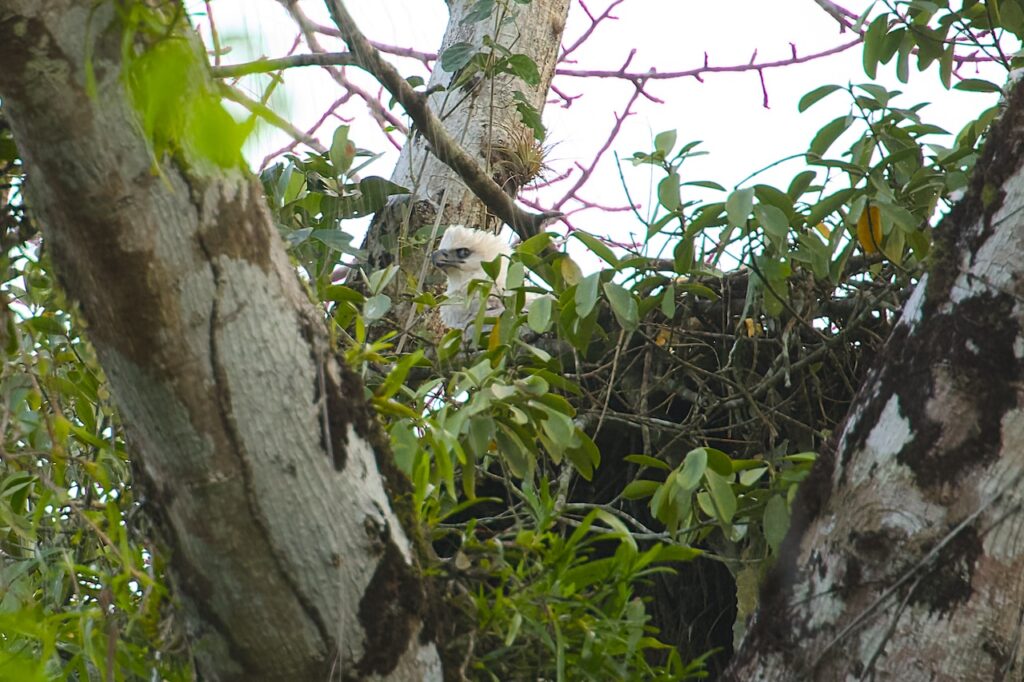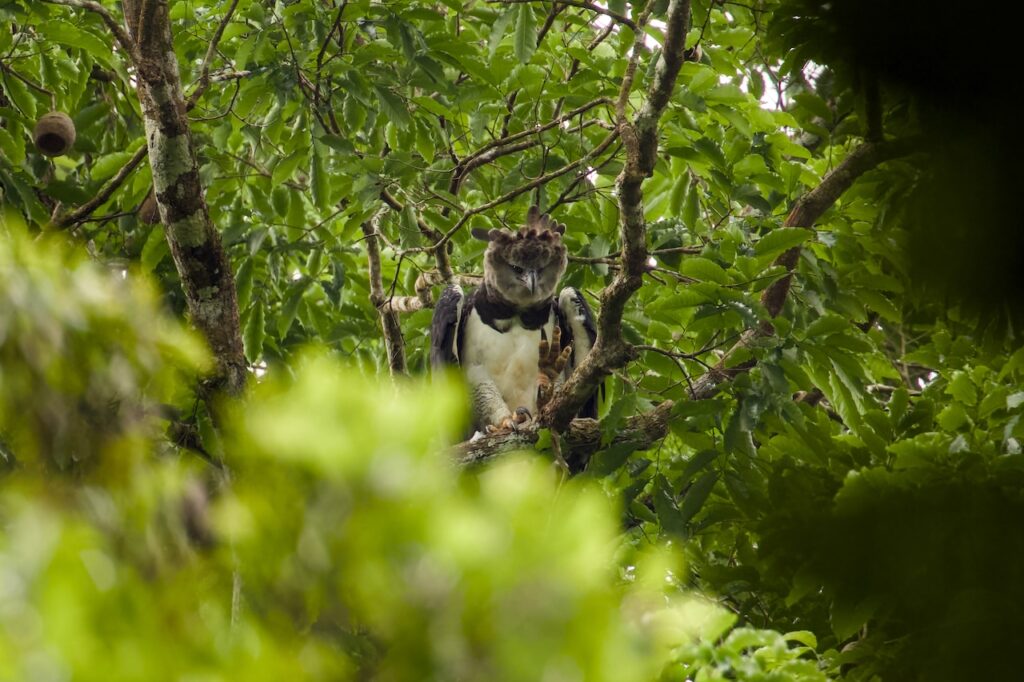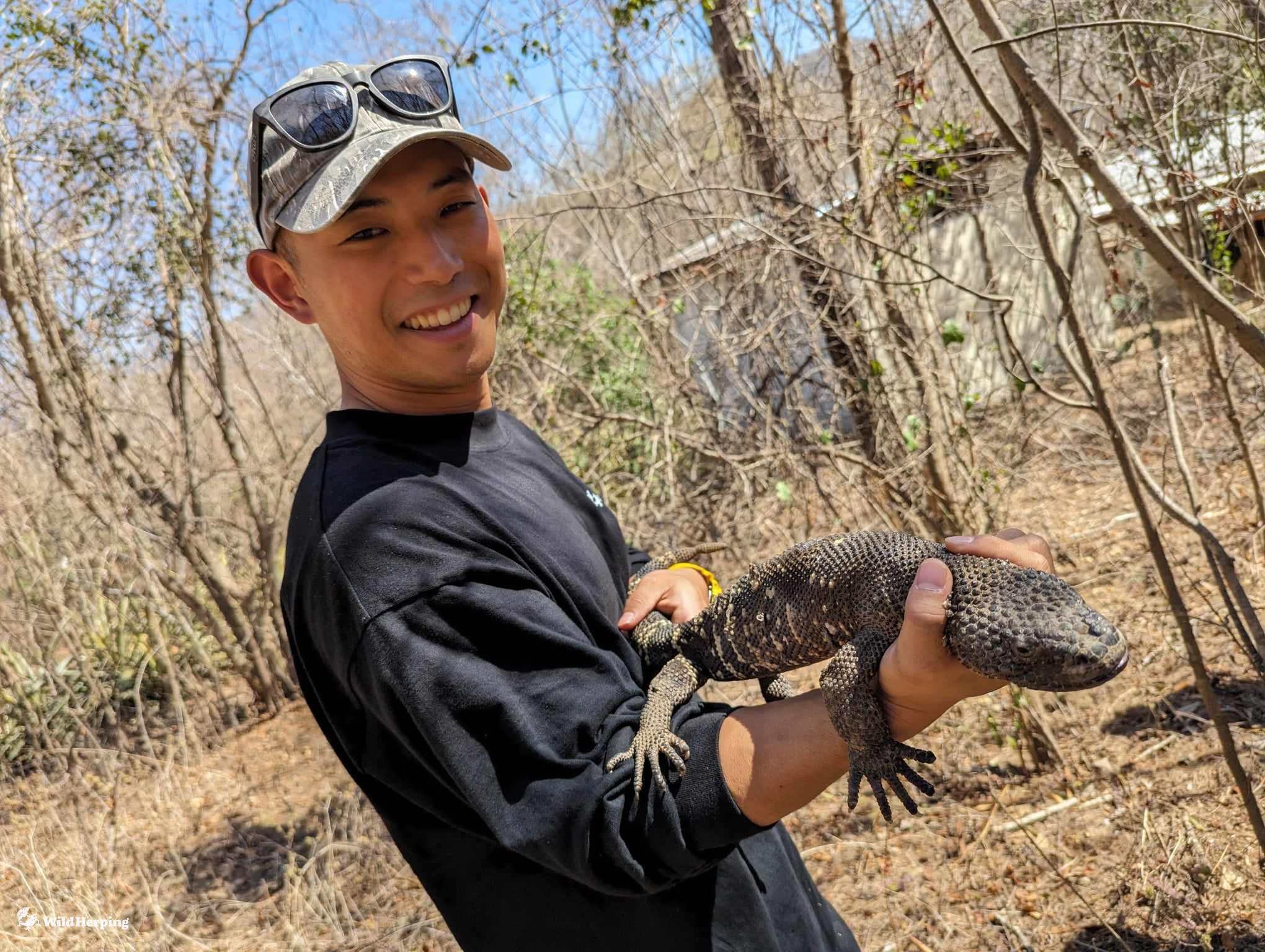This time, let’s explore how to find the Harpy Eagle (scientific name: Harpia harpyja), one of the world’s top three largest birds of prey. They are found in the tropical rainforests of Central and South America, including Suriname, Colombia, Costa Rica, Guatemala, Guyana, Honduras, Peru, Belize, Brazil, and Paraguay.
Due to their large body size, unlike other birds of prey, Harpy Eagles usually perch on branches while looking for prey. This makes them extremely difficult to spot in the densely forested jungle. That’s why it’s most effective to search for them during their nesting season, when their behavior is more predictable. Let’s take a closer look.

Nesting Behavior of the Harpy Eagle
The incubation period lasts about 50 to 60 days, and the chick remains in the nest for around 6 months. It continues to practice flying and hunting near the nest, reaching full independence approximately 18 months after hatching.
Female Behavior
From nesting to hatching, the female usually stays in the nest. From hatching to about two months, she mainly remains with the chick, but if the male fails to deliver food, she will go out hunting. Between 2–6 months, she visits the nest every 2 to 10 days depending on the chick’s age, to check on and feed it. Even if not in the nest, she’s often watching from nearby. After 6 months, the female tends to stay away, only visiting about once a month, as the chick begins to learn hunting. If the chick is female, the mother usually stops feeding it earlier to avoid future competition for territory.

Male Behavior
From nesting to hatching, the male brings food about every 7 to 10 days. From hatching to 6 months, he brings more food the younger the chick is—sometimes daily, sometimes once a month. After the 6-month mark, the male rarely visits.
Best Time for Observation
Given this behavioral pattern, the best time to observe Harpy Eagles is when the chick is between hatching and 2 months old, as the parents return frequently. The 2–6 month period is also good, since feeding continues, and the chick can often be seen nearby. Note that access to nesting sites is usually restricted before and right after hatching due to sensitivity during that time.

Observation Record (2025)
In 2025, we observed a mother Harpy Eagle with a 2-month-old chick. She was perched on a high branch overlooking the nest, watching from a distance.

Conclusion
The Harpy Eagle is one of the largest raptors in the world. We hope this guide helps you plan your own observation trip.









